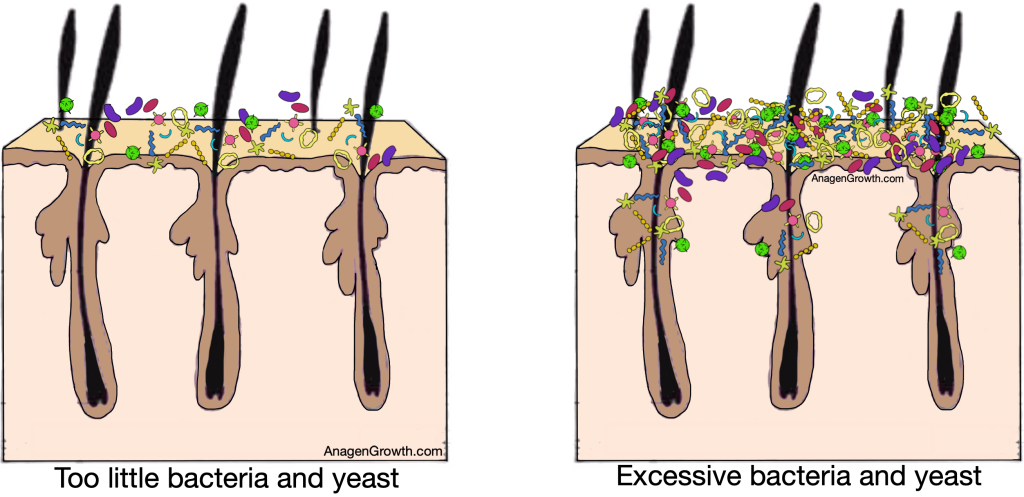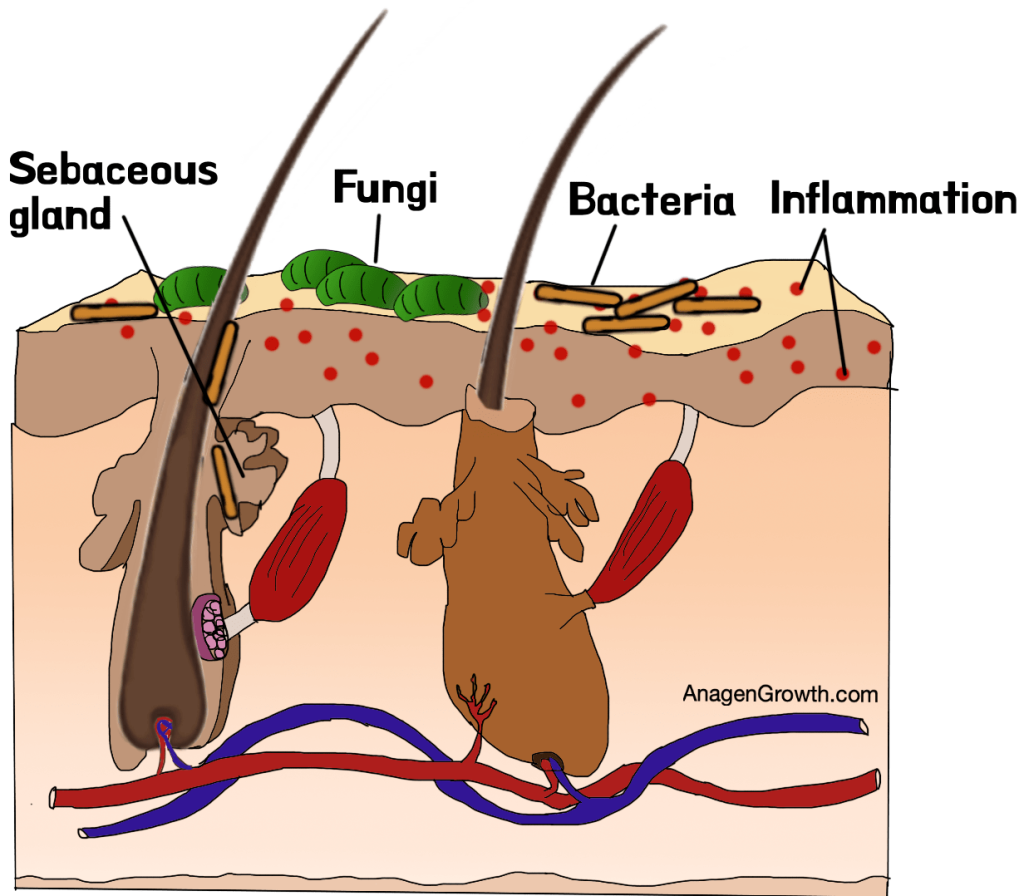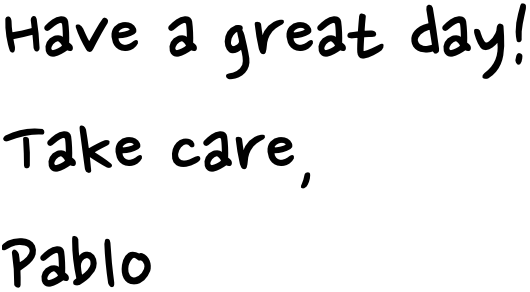Human beings are mostly made up of microbes. In fact, we have 10s of trillions of them. When it comes to our scalps, microorganisms like yeasts and bacteria have a pretty important role to play.
There’s more to your scalp that just skin and hair. In fact, there’s a lot going on. Your scalp is covered by living and dead skin, sebum (oil produced by sebaceous glands) and a wide variety of microorganisms that live, eat, excrete and die on the scalp.

These microorganisms include yeast, fungi and bacteria. Most of the time, we want these microorganisms on our scalp. We feed them with our sebum and dead skin and in return, they produce enzymes that help mediate homeostasis and contribute to healthy hair cycling. It’s a win-win.
Problems can arise when the scalp is colonised by the wrong strains of microorganisms or when it is covered by too many microorganisms. When we have too many microorganisms roaming on our scalp, or when they make their way down into the sebaceous ducts, microorganisms’ toxic byproducts can accumulate and elicit inflammation.

A study showed that 58% of patients with androgenic alopecia had porphyrins (toxic byproduct of a bacteria called ‘cutibacterium acnes’) in the hair canal whereas only 12% of people without androgens alopecia had porphyrins in the hair canal.1

Our body’s attempt to solve this over colonisation of bacteria often involves producing more sebum, although this only ends up feeding more bacteria and worsening the situations. This is likely the reason enlarged sebaceous glands are often observed in people with androgenic alopecia.
Another enemy of our attempts to maintain thick, healthy and seductive locks of hair that cause members of the opposite sex (or the same sex – whatever does it for you) to gawp in awe is a class of fungi called Malassezia.
Malessezia has enzymes that break down fats and then produce inflammatory prostaglandins like PGD2. In other words, Malassezia is no bueno.

This can lead to dandruff and can contribute to both telogen effluvium (hair shedding) and pattern baldness (hair thinning).
What is Ketoconazole shampoo?
Ketoconazole (often sold under the brand name Nizoral) is an anti-fungal medication with anti-inflammatory and anti-androgenic properties. Ketoconazole is typically used to treat skin conditions like dandruff, seborrheic dermatitis or jock itch… and hair loss.

This medication can be taken orally, applied as a cream or applied as a shampoo – ketoconazole shampoo is the most common way of using and applying ketoconazole.
In most countries, a 1% concentration can be bought over the counter while a 2% concentration will require a prescription.
How does ketoconazole work?
1. Kills Fungi
Ketoconazole impairs the synthesis of ergosterol, a crucial component of fungal cell membrane. In simpler terms, ketoconazole destroys fungal cell membranes thereby killing the fungus. This helps restore a healthy, non-inflamed scalp.

2. Clears up bacteria
Ketoconazole also disturbs bacterial reproduction thereby minimising destructive bacteria on our scalp.
By removing (or lowering) chronic inflammation on the scalp, our scalp environment allows for healthier hair growth, longer anagen phase, as well as improved hair counts and thickness.
3.Reduces dihydrotestosterone (DHT)
Ketoconazole’s anti-androgen properties may also contribute to its hair promoting properties by inhibiting the 5α-reductase enzyme thereby reducing DHT2. DHT is a hormone associated with hair loss. Reducing DHT can therefore reduce hair loss.
How to use ketoconazole shampoo
Application of ketoconazole is as simple as eating nachos:
- Apply while showering and leave in for 5 minutes before rinsing out (do NOT rinse the shampoo out immediately after applying it on the scalp).
- Use 2 to 4 times per week.
That’s it.
Note that for best results, ketoconazole should be used as an adjunct therapy as it is not likely to produce mind-blowing results by itself.
Hair improvements are typically seen 3-6 months after use. Although it may take longer.


